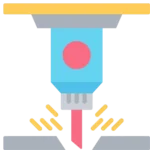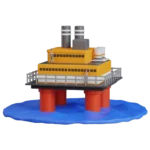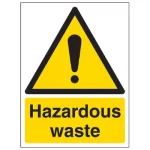Oil and Gas waste management technology
The oil and gas industry is renowned for having the capital to develop cutting-edge technologies to maximise efficiency and profits. With environmental pressures growing, they are deploying their financial firepower to improve waste management technologies to handle, treat, and dispose of problematic, difficult-to-recycle waste.
Here are some examples of existing processes:
Separating drill cuttings
Solids control equipment
Shale shakers, de-sanders, de-silters, and centrifuges are used to separate drill cuttings (i.e. rock and soil fragments) and other solids from drilling fluids. This equipment helps reduce the volume of waste and allows for the reuse of drilling fluids, which would otherwise become disposable chemical waste that requires treatment.
Thermal desorption units
These units use heat to separate hydrocarbons from drill cuttings. The process recovers reusable oil and produces dry, non-hazardous solids that can be disposed of more easily in landfills onshore or reused in industries like construction. The units are only improving as they incorporate AI and robotics.
Reinjection
Technology that grinds drill cuttings into fine particles and injects them back into the subsurface formations with ‘produced’ water. This method reduces the need for surface disposal and minimises environmental impact.
Hazardous waste processing
Bioremediation
Microorganisms are used to break down or degrade hazardous substances in contaminated waste, such as tank sludge, spent chemicals, oily waters, etc. This method is passive, emits few emissions, and requires little energy, making it ideal.
Advanced water treatments
These include membrane filtration, reverse osmosis, and evaporation systems that are used to treat produced water and other wastewater streams. Depending on the level of treatment, the treated water can be directly reused in offshore operations or safely discharged into the sea with minimal environmental impact.
Waste-to-Energy technology
Some facilities convert waste into energy through incineration, gasification, or pyrolysis. This reduces the volume of waste and generates energy that can be used directly in offshore operations or sold to the grid when onshore.
💡 Reduced landfill waste: The total quantity of waste sent to landfills from offshore oil and gas installations decreased by 16% from 2018 to 2019, showing the industry following the UK-wide preference for waste incineration.
Radioactive waste processing
Technologies for managing Naturally Occurring Radioactive Material (NORM) include descaling facilities, encapsulation, and specialised disposal methods to ensure the safe handling and disposal of radioactive waste. These are extremely high-tech and specialised, and much of their development has been funded by oil and gas money.
💡 Recycling technologies: Read our article on commercial recycling technologies to understand what may be incorporated into oil and gas waste management.





